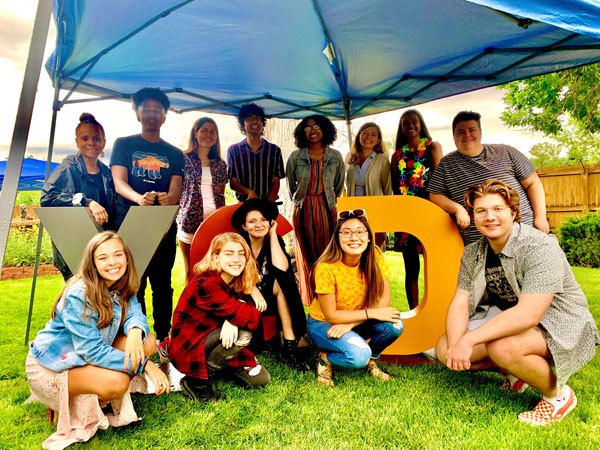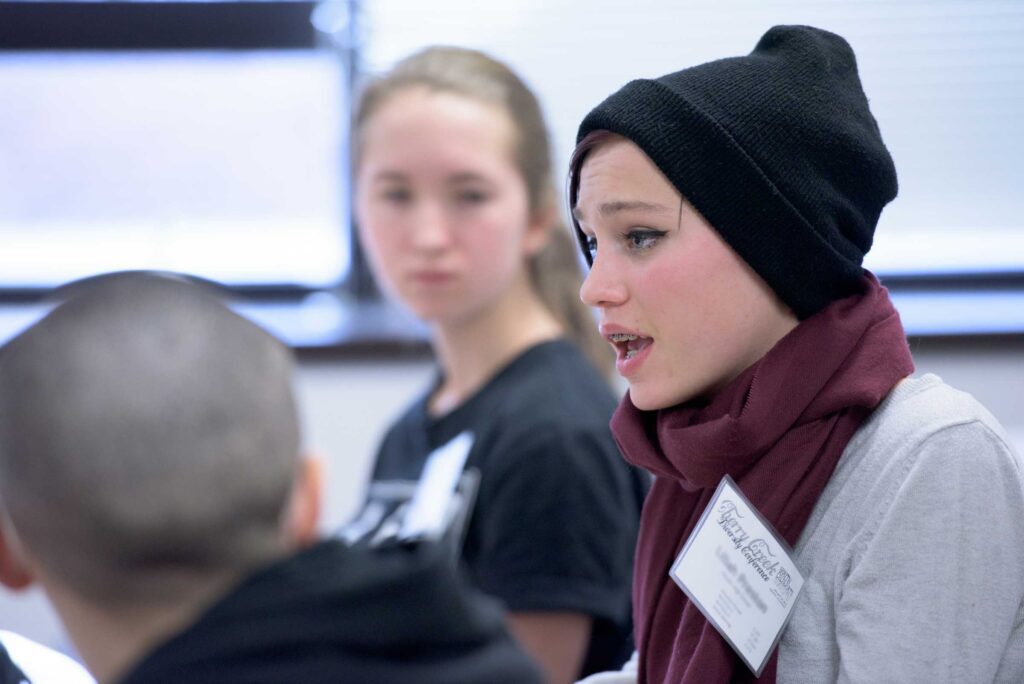We build understanding, empathy and connections between disabled youth and their peers to co-create a world without ableism.
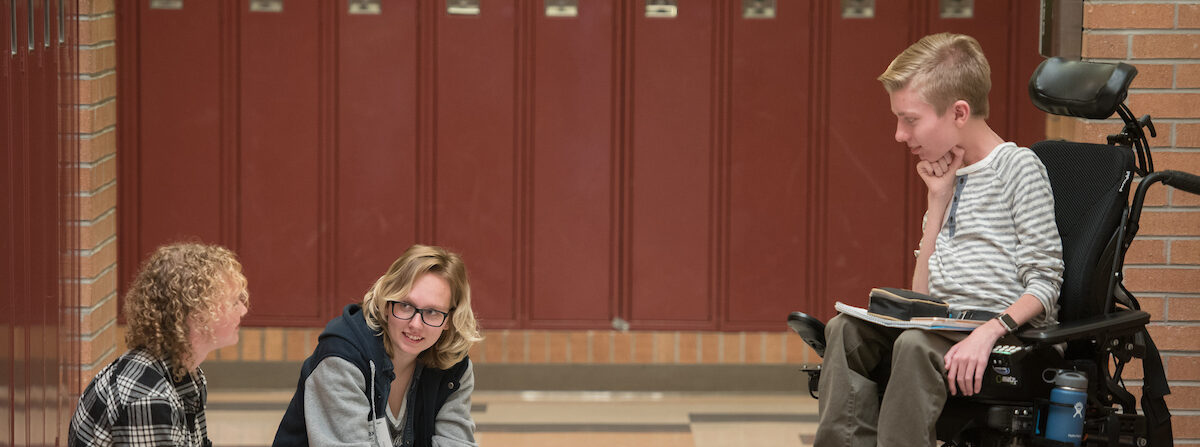
Jump to a section:
A Note on Language
When talking about disabilities, it’s useful to first establish respectful language and terms. This is not always clear-cut and there are debates about the right language to use. Here are some guidelines based on this article by Alex Kapitan:
- First and most importantly, different people have different preferences on how they would like to be called. Always respect an individual’s preference for how they would label themselves.
- Some people prefer person-first language, which de-centers the disability or diagnosis. For example, you would say “person with a disability” so that your language reflects them as a whole person, and not defined exclusively by their disability.
- In more recent years, some disabled activists and communities have pushed back on person-first language, because they feel it attempts to divorce their disability from their identity. For these people, their disability is intrinsic to who they are, and they want to prioritize their disability in how they refer to themselves. For these people, it is preferable to say “disabled person” or “autistic person”; this is called identity-first language.
- Most important in this discussion is to honor each individual, and to be transparent about terms and terminology.
- Throughout this page and YCD materials, we have chosen to use identity-first language based on the guidance and perspective of activist Lydia X.Z. Brown and others, but we recognize and respect this approach does not work for all disabled people.
- There are 13 categories of disability in the Individuals with Disabilities Education Act (IDEA), and within each of these categories are a large number of different disabilities. It’s critical to remember the wide diversity and range of disabilities at all times, and avoid stereotypes or oversimplication.
Important Disability Terms
- Invisible disability: disabilities not readily visible when you see or meet a person, for example debilitating pain, fatigue, dizziness, cognitive dysfunctions, brain injuries, learning differences and mental health disorders, as well as hearing and vision impairments. (Invisible Disabilities Association)
- Neurodiversity: the idea that there is no single, perfect ideal of what a human mind or brain should be: that, on the contrary, the existence of diversity of minds and brains is necessary for human societies to flourish. (Patrick Dwyer)
- Neurodivergent: having a brain that functions in ways that diverge significantly from the dominant societal standards of “normal.” (Dr. Nick Walker)
- Neurotypical: having a style of neurocognitive functioning that falls within the dominant societal standards of “normal.” (Dr. Nick Walker)
- Ableism: systematic, institutional devaluing of bodies and minds deemed deviant, abnormal, defective, subhuman, less than. (Lydia X.Z. Brown)
- Disability justice: challenges the idea that our worth as individuals has to do with our ability to perform as productive members of society. It insists that our worth is inherent and tied to the liberation of all beings. (Nomy Lamm)
How Ableism Shows Up in Today’s World
- Ableist language is used by many of us every day, often without realizing it: words like lame, r*t*rded, crazy, psycho, and crippled are just a few examples of ableist terms that should not be used. For more examples and alternative language suggestions, check out this list of ableist language from Lydia X.Z. Brown.
- When interacting with disabled people, we sometimes ignore the disabled person’s ability to communicate or make their own decisions. Examples include looking at an ASL interpreter instead of the Deaf person who is signing to you, pushing someone in their wheelchair without them asking, or directing questions to a parent or assistant instead of the disabled person themselves. (YO! Youth Organizing – Disabled & Proud)
- When engaging disabled youth in conversations, they are often asked only about their disability, rather than being seen as complex people with multiple aspects to their identity (race, gender, sexuality, and more).
- Disabled youth are often not taught in the same classrooms as their peers, and may be segregated in a different part of a school building. Curriculum rarely includes mention or inclusion of disabled people, whether in books, videos or elsewhere.
- When disabled people are the focus of a movie or book, it is often to provide inspiration to the reader or viewer, rather than building true understanding that values the disabled person. This is sometimes referred to as “inspiration porn.” Learn more about inspiration porn from activist Stella Young in her TED talk.
- Another genre of disabled movies and books focuses their attention on the challenges of a companion, sibling, parent or helper of disabled people, and then celebrates their success for dealing with the disabled person. These films and books encourage and celebrate “saviorism” of the people who cope with disabled people. Learn more about the harm media can perpetuate on disabled people from this interview with activist Alice Wong.
Disability Justice Leaders Who Guide Our Work
Here’s a list of folx who are leading the conversation on disability justice today. They inspire and inform our work. Follow them on social media, or seek out opportunities to hear them speak to dig deeper on these issues.
YCD Workshops on Disabilities
YCD has a curated library of over 60 workshop guides on every aspect of inclusion and justice work for middle and high school youth to explore in their own youth-led club or group — with new workshops being published every month. These guides can also be used by educators as part of their in-school curriculum, where interested.
Below is a free sample workshop created by YCD on the topic of disability justice, available for anyone to use and download.
Language Matters: Disability Terminology
Reflect in small groups on common terms that exclude people with disabilities. Create a list of ableist terminology as a large group and learn alternative ways to describe your experiences without being ableist.
Other topics available as downloadable workshop guides or offered at YCD conferences/events include:
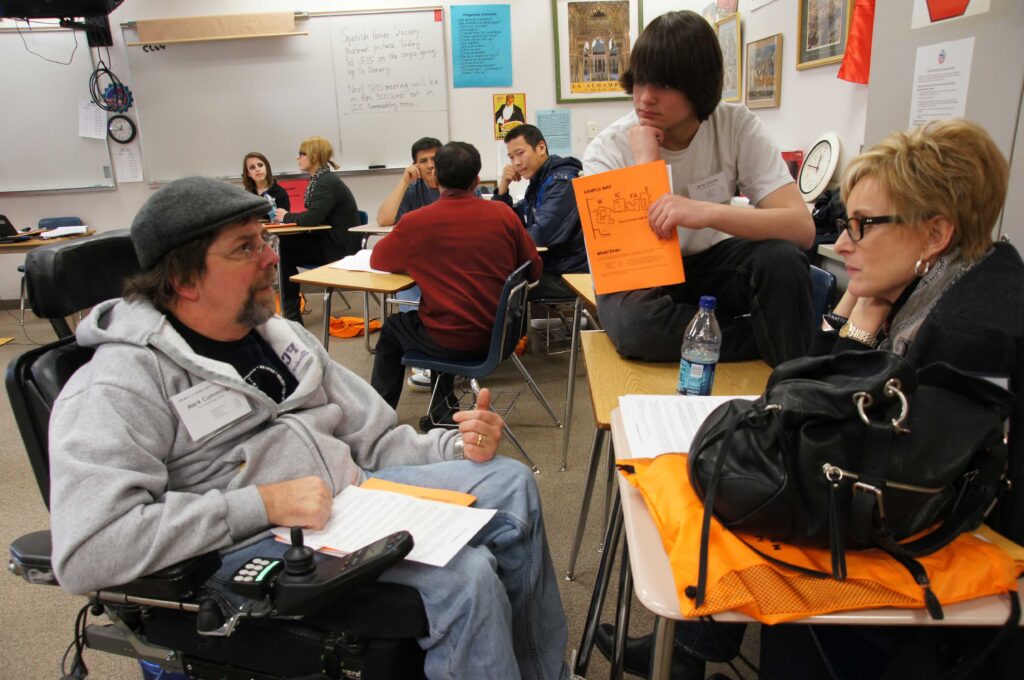
Disability, Advocacy, and Building Power
Explore how to become an advocate for disability rights or an ally for students with disabilities. We’ll explore the intersection of disability and white privilege. We will give you concrete ideas on how to disrupt disability oppression.
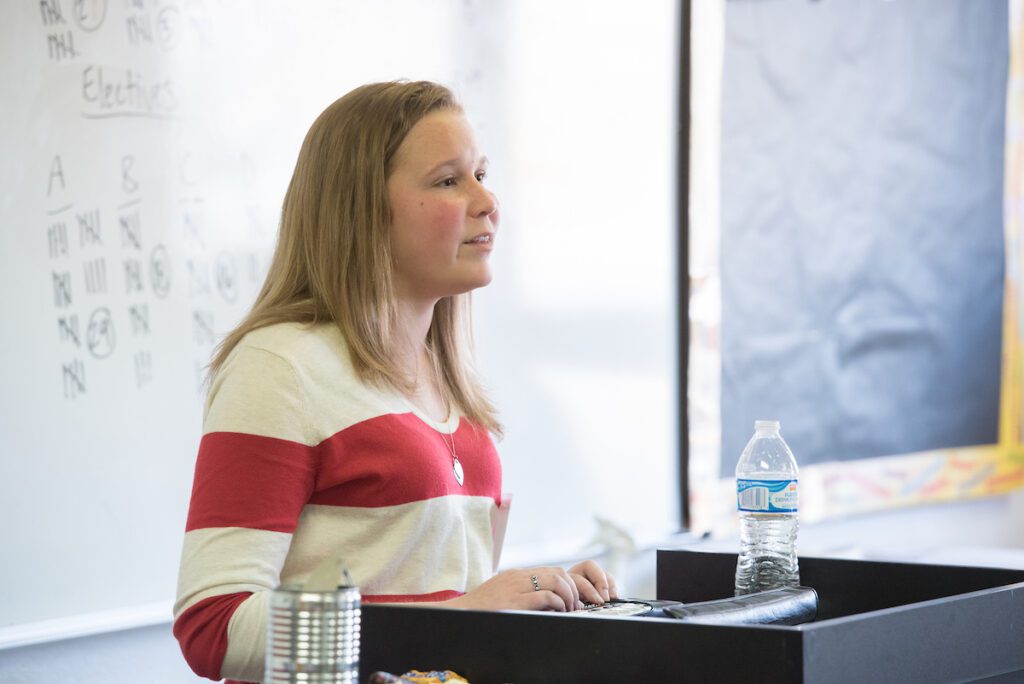
Character Counts: Not Judging People
Let’s have a discussion about students who may be “different” than their peers. Using a hands-on demonstration, we will also talk about not labeling ourselves or one another. Not judging people is harder than it may seem; do you have what it takes?
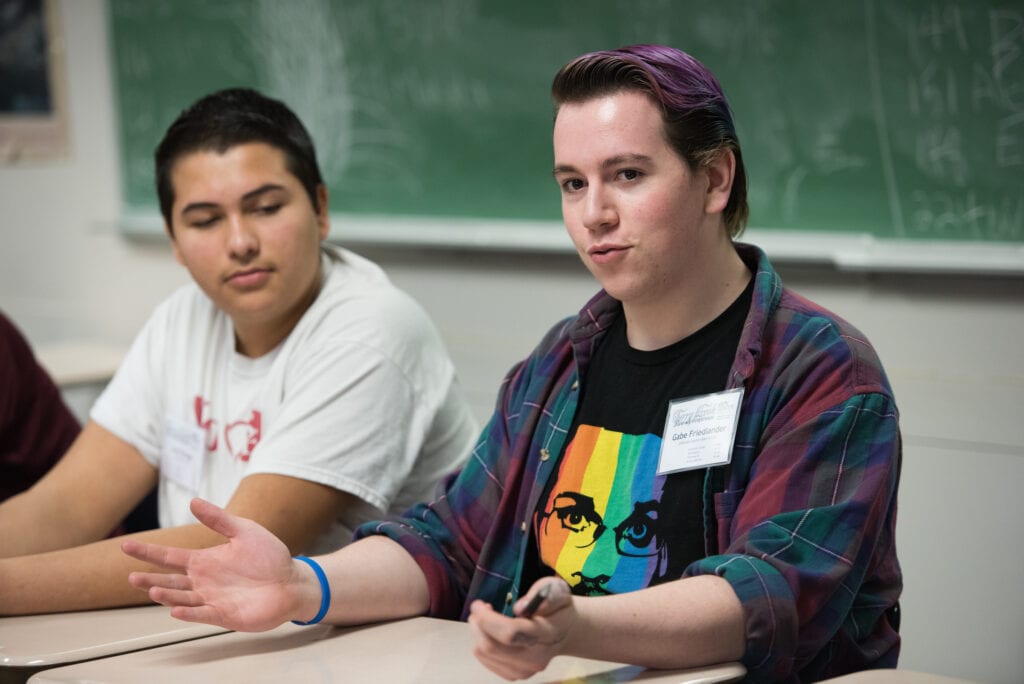
An #ActuallyAutistic Tour of the Spectrum
This workshop is a crash course on autism, the autistic community, and the neurodiversity movement. Led by autistic self-advocates, this workshop will break down stereotypes and misconceptions about autism in order to help clarify who we are, what we think about ourselves, and how we perceive and interact with the world.
To experience these workshops, YCD events, and much more, start or join a YCD chapter!
Videos to Explore Disability Justice
Community, Disability, and Representation
Many disabled people have built a community to protect each other from able-bodied people’s inability to make space for them. You will learn just how uneducated the collective is on what it takes to fight for disability justice. After breaking down just how many barriers are hidden in plain sight, you will understand the gravity of the situation.
#ActuallyAutistic: Understanding Autism and Neurodiversity
There are so many stereotypes and misunderstandings about autism and neurodiversity, often perpetuated by groups that claim to support autistic people but are led by non-autistic people. Listen to this session, hosted in partnership with the Asperger/Autism Network (AANE), to hear from three panelists who are actually autistic about their experiences, and what everyone needs to know to be better allies to the neurodivergent community.
Dreaming Disability Justice into Our Future
Disability justice advocate Lydia XZ Brown provides a compelling and inspiring narrative on how we can make disability justice a reality through our words and actions, and how disability justice is grounded in the intersectional work of feminism, LGBTQ+ activism, racial justice, and more.
Living in the Deaf World
What is like to be Deaf? In this video, disability rights activist Mariangela Acosta shares her experiences as a Deaf young person, and clears up some misconceptions or misunderstandings around what it is like to be Deaf.
Living with Down Syndrome
In this video, Sophia, a young person with Down Syndrome, shares about her experience living with the condition, and combats stereotypes about what it means to live with Down Syndrome. This video was recorded by the Global Down Syndrome Association.
Stay up to date for future student-generated videos on this topic and more by subscribing to YCD’s YouTube channel.
Disability Positive Books for Students
Here is a list of recommended books for students and teens that explore and address disabilities and disability justice issues. You can find free e-books or your local library using OverDrive.com.
Disability Positive Books for Educators and Adults
And this list is for teachers, educators and adults looking for guidance on disabilities and disability justice within the classroom or school system.
Disability Positive Movies
Below are movies that address disabilities and disability justice topics in meaningful and compelling ways, and/or contain authentic and positive portrayal of people with disabilities.
Podcasts on Disability Justice
Here is a list of recommended podcasts you can download and follow to explore disability justice work in more detail.
Ideas for Local Action to Support and Include Disabled Youth
Here are just a few ideas of ways students can take action locally to advance disability justice and support disabled youth in your school or community:
- Some of our most important work is on ourselves. Reflect on ableist language that you carry in your vocabulary, and make a daily effort to remove ableist terms from the way you speak. When others use ableist language around you, don’t be overly harsh or critical; instead, provide education and real-world scenarios on why the language is offensive, and suggest alternatives.
- Are disabled students segregated in a different part of your school so they are out of sight for most students? Does your school provide opportunities for disabled youth to interact and build connections with their peers? Conduct a project with disabled students and administration to reimagine how disabled students can be more fully included in your school’s campus, classroom and curriculum. Ensure any effort centers the voices and ideas of disabled students.
- Are “special education” classes receiving the same funding, supplies, books, and support as typical courses in your school? Often these programs are underfunded, and the materials used to teach these courses assume limits from the students enrolled. Learn about how one school district in California revamped their approach to special education. After doing some local investigation, work with disabled students, teachers and administration to support mainstreaming of special education students.
- Are disabled students welcome and included in clubs and extracurricular activities at your school? If they are welcome but not participating, are there barriers preventing their attendance, such as the bus schedule or accessibility of the meeting space? Look for barriers that may prevent disabled youth from joining in these important activities and conversations, and then work to remove those barriers, centering the disabled voices throughout the process.
- One disability that is significantly misunderstood and misrepresented today is autism. Consider inviting an autistic person to join your club or class to share more about their experiences, and to learn about the neurodiversity movement. Be cautious about which organizations you approach for help; there are many autism-focused orgs that are not led by autistic people, and are actively doing harm to the autistic community. Ensure you are hearing a perspective that centers the autistic person. The hashtag #actuallyautistic on social media and elsewhere can help in this effort.
Do you have a suggestion of an addition or resource for this page? Share your idea with us.
